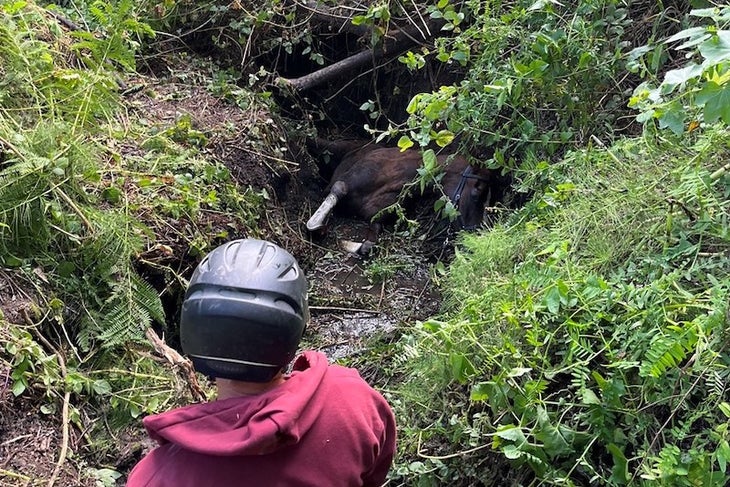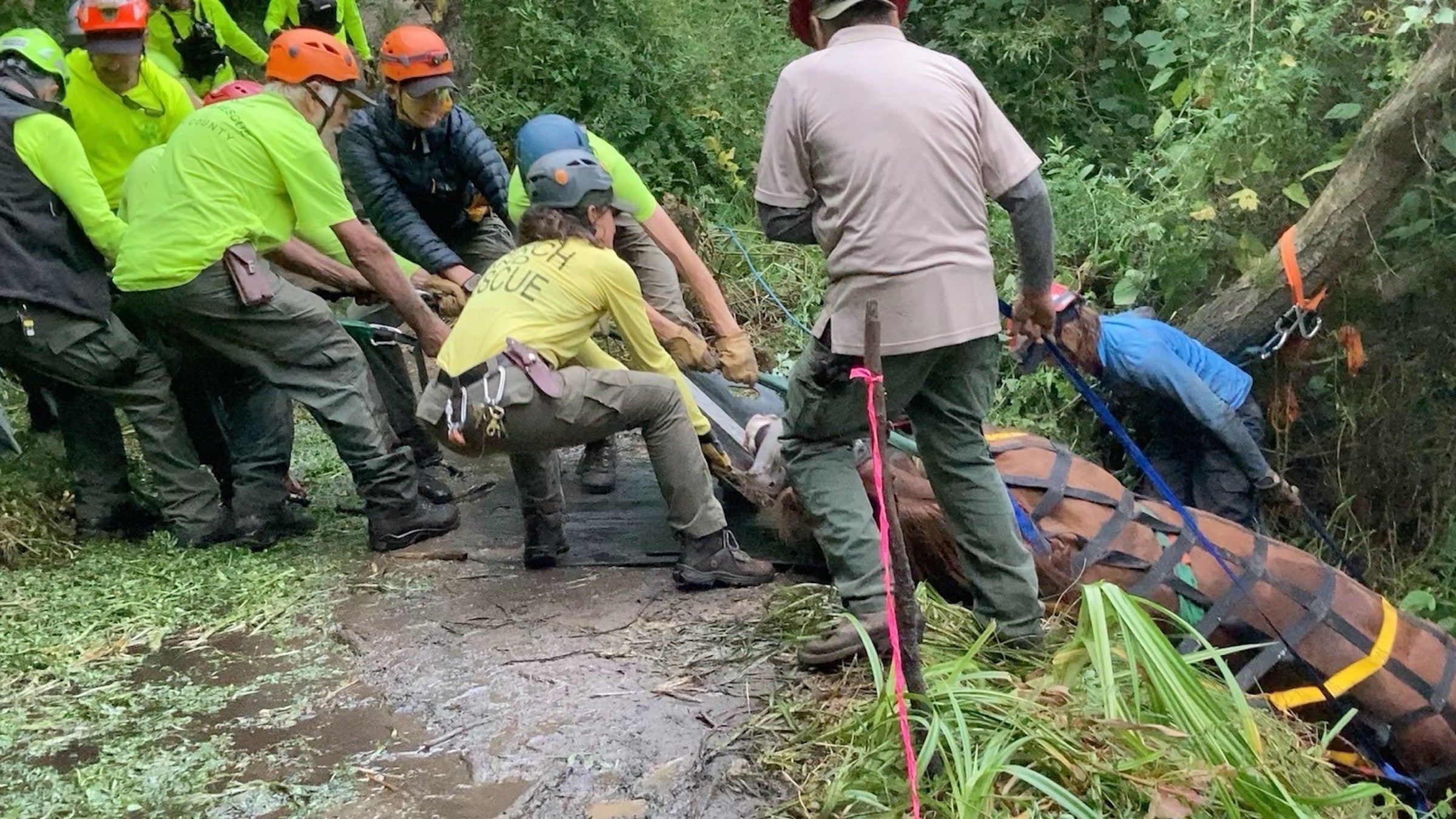The search and rescue team gathered on the edge of the ravine in California’s Point Reyes National Seashore. They gazed down and scratched their heads. The patient was bigger than they were used to. Much bigger.
Rescuing hikers and dogs in the backcountry is hard enough. However, human beings tend to be relatively easy to lift, load into litters, and helicopter out. Horses, not so much. And yet, every now and again, backcountry SAR teams are called to assist with equine rescues. These efforts often take dozens of people, ropes, pulleys, and complex problem solving. Case in point: the rescue that occurred early last week in Point Reyes.
Last Tuesday, a horse and rider slipped on a section of damp soil and toppled down the side of the National Seashore’s popular Coast Trail. The rider managed to dismount just in time, but the animal fell about 30 feet down a steep hillside and became stuck in a narrow ravine. The rider called local authorities, who launched a rescue operation. The mission ultimately took seven hours.
The Coast Trail—a multi-use path frequented by hikers, bikers, and equestrians—is relatively mellow, but going off trail lands you in terrain that’s “quite steep and densely vegetated,” Park Ranger Sierra Frisbie told Backpacker. That made getting to the animal pretty tricky.
First, rescuers confirmed that the horse was uninjured. There were no signs of bone breaks or bleeding. But that didn’t mean they were in the clear: The 20-year-old Arabian was lodged in a narrow spot and unable to get its footing.

“Horses are large animals. They can weigh over 1,000 pounds. If there’s any way you can help the horse help itself, you want to do that,” explained Frisbie. “So one of our biggest priorities was to get that horse to its feet. But first we had to get it unstuck.”
The first thing that rescuers attempted was a forward assist, Frisbie said.
“You get straps underneath the horse. And you give it a big tug to try to see if it needs just a little help to get it back to its feet,” she explained. Unfortunately, the horse had been struggling for a while, so by the time rescuers got to it, it was exhausted. A forward assist wasn’t enough. The volunteers quickly realized they were going to have to haul it out by hand.
So, the local Marin Search and Rescue team deployed its low-angle rope rescue squad. This is a group of volunteers trained to rig complex pulley systems to haul victims up tricky terrain.
“They set up a system of anchors and ropes,” Frisbie said. “We were able to extricate the horse by hauling it out and packing it on a rescue sled, which is basically a massive litter.” The team took turns pulling on the ropes, laboring to haul the animal more than 30 feet up the side of the ravine. The entire operation took about seven hours and the assistance of 15 to 20 people.
Although the Coast Trail is known for its idyllic views and gentle promenade, the region hosts its fair share of traffic. Frisbie noted that fully involved animal rescues like this one are pretty rare. The last time the park’s animal rescue team assembled was for a lost horse. It took a few hours to locate the horse, but the animal was ultimately found safe.
Conversely, “This [rescue] was all hands on deck,” Frisbie said. “It took a lot of troubleshooting.”
Last fall, the park hosted a large-animal technical-rescue training, which paid off in this scenario. “Unlike human patients, [animal rescuers] are working with a very large, somewhat unpredictable patient. There are a lot of moving pieces that determine the safety of the rescuers,” Frisbie said. Fortunately, she added, their rescue team was ready for the complexity of the incident. It also helped that the horse and the rider were supportive of their efforts, she added.
Once the horse was back on solid ground, it was and walk the last several miles back to the Palomarin Trailhead.


